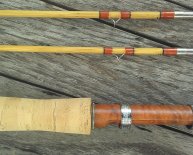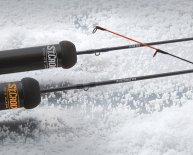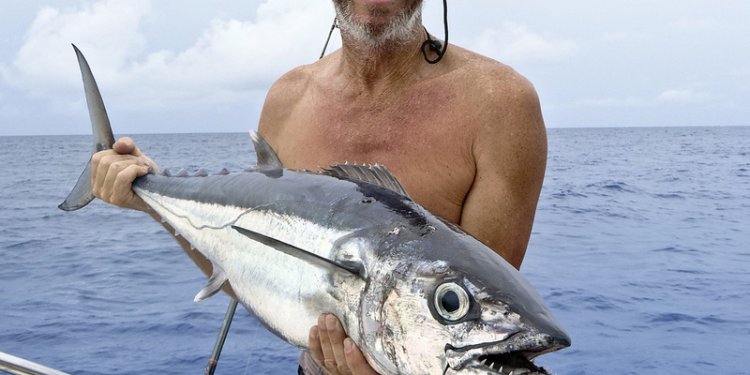
What size Fishing rod?
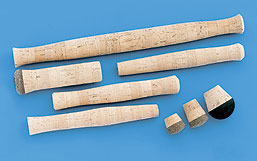 Author: David Mead
Author: David Mead
One common question requested between fly fishermen is, “just what pole are you fishing?” Fly rods are the focal point of a fly angler’s arsenal – the stone stars of the fishing gear. Successful fly fishers won’t just know the brand and name of pole these are generally fishing; they are going to understand why their particular pole makes them more likely to catch seafood. And although modern-day fly rods are filled with a number of different technologies, understanding all of them doesn’t need to be difficult.
Line Body WeightBecause artificial flies have actually reasonable loads and densities, rods are made to throw weighted fly line. The weight of the fly line can help you cast an unweighted fly, unlike standard fishing where fat of appeal holds out the line. A rod’s body weight score denotes the extra weight of range that needs to be combined with it. For those who have a five-weight pole, it is designed to be fished with a five-weight range.
Whenever identifying just what rod weight you need to use, there are many points to consider. Of these, the kind of liquid you are fishing (the length of your casts), commonplace climate conditions, fly size and seafood size tend to be primary. Usually, the more expensive the seafood, heavier the fly, bigger the human body of liquid and stiffer the wind, the weightier weight rating your fly rod need to have.
Recommended pole loads for popular types
| Species | Rod Weight |
|---|---|
| Panfish | 0-4 |
| Average-size trout | 4-6 |
| Smaller trout in small creeks | |
| Smallmouth Bass | 5-8 |
| Largemouth Bass | 5-9 |
| Carp | 6-10 |
| Steelhead | 7-9 |
| Salmon | 8-10 |
| North Pike and Muskie | 8-12 |
| Grayling | 3-5 |
| Bonefish, redfish | |
| Striped bass, untrue albacore | |
| Peacock bass, fantastic dorado | |
| Tarpon, roosters, giant trevally | 10-12 |
| Mahi-mahi | 10-14 |
| Bluefin | 12-14 |
| Sailfish and marlin | 14 |
Fly rods are usually longer than standard rods, but could vary considerably in total. Smaller rods, 6-8 ft., are superb for small creeks with many obstacles to throw around. Longer rods, 8-10 ft., work very well in larger systems of liquid in which lengthier casts are necessary to reach seafood. These rods tend to be perfect for nymphing waters with complex currents, as they allow you to attain more than contradicting flows and obtain a much better drift. Rods more than 10 ft. are generally spey or change rods. Flex and Action
Flex relates to just how deeply the rod bends during casting. Generally speaking, fly-rod flex ranges are split into three categories:
• Tip-flex – just the very first third regarding the pole flexes whenever casting.
• Mid-flex – The rod flexes toward halfway point while casting.
• Full-flex – The rod flexes entirely towards hold during casting.
A fly rod’s activity category depends upon just how rapidly the rod loads and unloads. Although this is heavily affected by range weight – heavier travel lines cause rods to unload gradually – action classifications receive based on exactly how rods cast utilizing the range these people were manufactured for (i.e. a five-weight rod with a five-weight line). If a rod loads and unloads rapidly, it’s quick activity. If a rod loads and unloads slowly, it's slow action.
The flex and activity you desire be determined by your casting stroke plus the environment and conditions you are fishing. Slow rod actions with an increase of flex focus on a deliberate casting style, while faster actions with less flex fit really with quickly, powerful casting shots.
Though reasonable distance and accuracy are obtainable with nearly any well-built pole, fast-action rods are notable for extreme distance and powering flies and outlines through stiff winds. Slow-action rods tend to be ideal when fine presentations to skittish seafood are needed.
As fly-rod technologies still advance, even more materials are increasingly being familiar with develop them. Each rod product has its own advantages.
• Graphite – The introduction of graphite toward fly-fishing globe in the early ’70s was a complete online game changer. The very first time, makers might make rods that were light, powerful, exceptionally delicate and very durable. Since then, producers have actually continued to improve graphite rods, now a number of the highest-performing rods tend to be graphite.
• Nano-silica resin – This technology pushes the advantages of carbon fiber (graphite) to brand-new amounts. Thousands of nano-silica particles tend to be infused in to the resin that fills the gaps amongst the mix chapters of the carbon materials. This is why the resin a structural element of the rod instead of just a fill-in, rendering it more powerful and more effective.
• Boron – Originally employed for aerospace design, it offers since already been placed on fly rods with success. Put into graphite, boron makes a rod more powerful, less heavy and much more sensitive and painful.
• Fiberglass – for some time, the graphite increase made fiberglass rods almost outdated. Recently, however, fiberglass rods made a comeback, carving completely their particular niche as an essential part of this fly-fishing business. Inherently slow than graphite rods, fiberglass rods serve a slower casting swing. They fish very well in close quarters, as they load with notably less line out than many graphite rods do. Many anglers believe it is not merely more efficient to go after tiny seafood in small channels with fiberglass, but in addition more enjoyable because an 8" brook trout on a fiberglass rod can feel like a 14" cutthroat on a graphite rod.
• Bamboo – Due to the fact conventional rod material, bamboo rods will always hold a particular invest the fly-fishing neighborhood. While bamboo has actually a somewhat quicker price of recovery (action) than fiberglass, it however produces slowly rods than carbon-fiber materials. Some like bamboo strictly the nostalgia. Other people like it for similar reasons they like fiberglass.
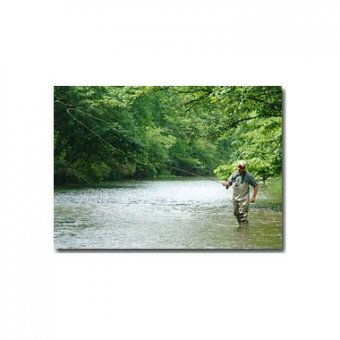 Bamboo rods are generally heavy when comparing to graphite and fiberglass, but a finely made bamboo pole is a pleasure to throw. Grip Styles
Bamboo rods are generally heavy when comparing to graphite and fiberglass, but a finely made bamboo pole is a pleasure to throw. Grip Styles
As with any regarding the other the different parts of a fly rod, the hold you need to choose depends on what you are most comfortable with in addition to conditions you're going to be fishing. Cigar and ultrafine grips have a definite down taper. They truly are typically used in combination with light rods. Half-wells grips are utilized mainly in midweight and midlength rods. Obtained a less distinct front side taper than cigar and ultrafine grips. Full-wells and reverse half-wells grips are often used on midweight to heavyweight rods. They make it much easier to include power to your casting swing along with your thumb because of their reverse taper.
Many rods integrate a battling butt simply beneath the reel chair. The battling butt lets you comfortably anchor the pole against the body to ease arm fatigue during long battles. Your pole may be heavier, however if you imagine your times will be invested battling large fish, a fighting butt is a helpful asset.
Multipiece RodsToday’s fly rods are generally built in two to seven pieces. The greater pieces a rod has, the greater convenient it's to keep. Historically, ferrules interrupt the transfer of power throughout the rod (the greater ferrules, the deader the action). However, advancements in technology have actually lessened these issues, making a four-piece or seven-piece rod perform similar to a two-piece rod.
Either sleeve-over ferrules or spigot ferrules connect the separate bits of a rod. Sleeve-over ferrules, where one section slides over the tip of one below it, are the most frequent. Spigot ferrules include an insert that expands out from the base section, enabling the most effective section to slide more than.
While both ferrules are used on all pole sizes, sleeve-over ferrules are far more frequently used on quicker rods, because they have actually a natural stiffness that works well well with fast actions. Spigot ferrules are utilized more regularly in smaller, reduced rods – specifically fiberglass rods, in which the consistent taper supplied by spigot ferrules is advantageous. Guides
Guides are metal loops attached to the pole utilizing bond and a light epoxy. They guide the fly make and out of the pole. You will find three types of guides: tip-top, working and stripping guides. The tip-top guide could be the guide regarding the extremely end associated with the fly rod; working guides populate the middle of the pole; the stripping guide is the very first and sometimes second guide in the pole.
Stainless steel or plated-wire guides are generally utilized. However, higher-end rods often make use of alloys like nickel or titanium.
Reel seats
There are many forms of reel seating. The best one available depends heavily from the environment you are fishing. If you should be fishing saltwater, it's vital that you choose a reel chair with saltwater-safe elements ( in other words. aluminum, titanium, carbon dietary fiber etc.). You don’t want a wood insert in a saltwater environment – the reel seat alongside your walnut insert might pleasing into eye, but after extended use on saltwater it's going to deteriorate, becoming both less aesthetically pleasing and less good at keepin constantly your reel snug towards rod. Exactly the same applies to other types of timber.
One more thing to take into account is how the reel is “locked” on reel chair.


